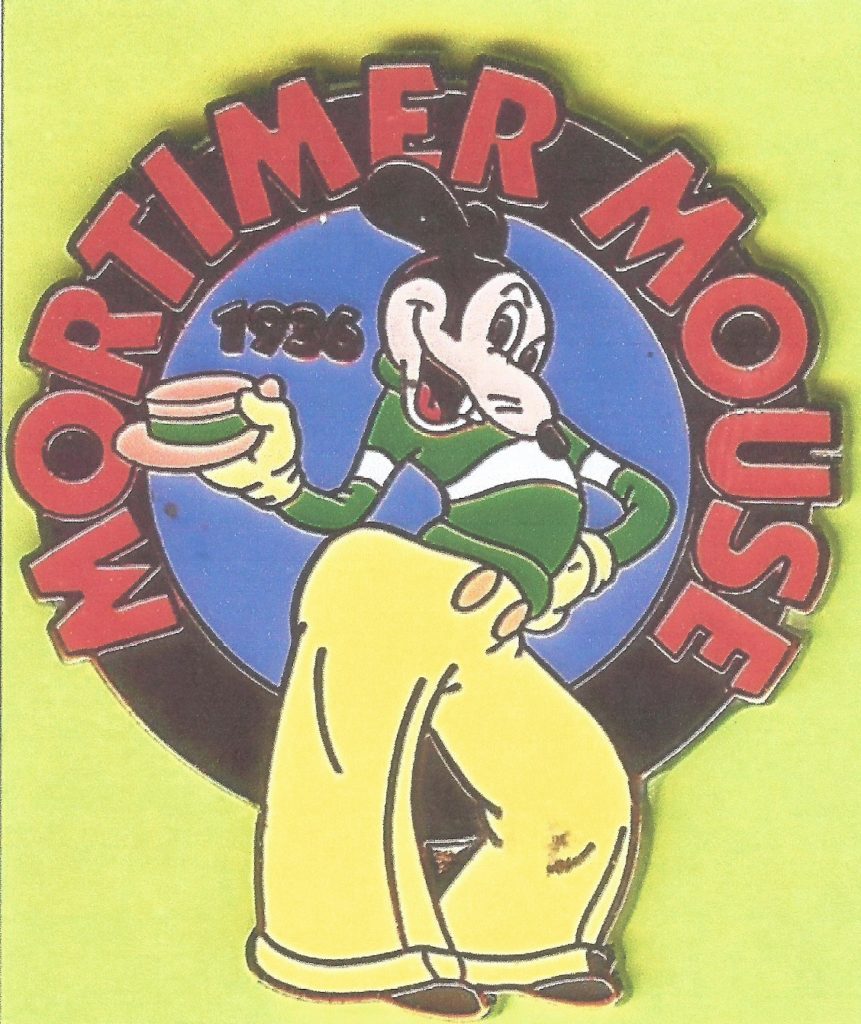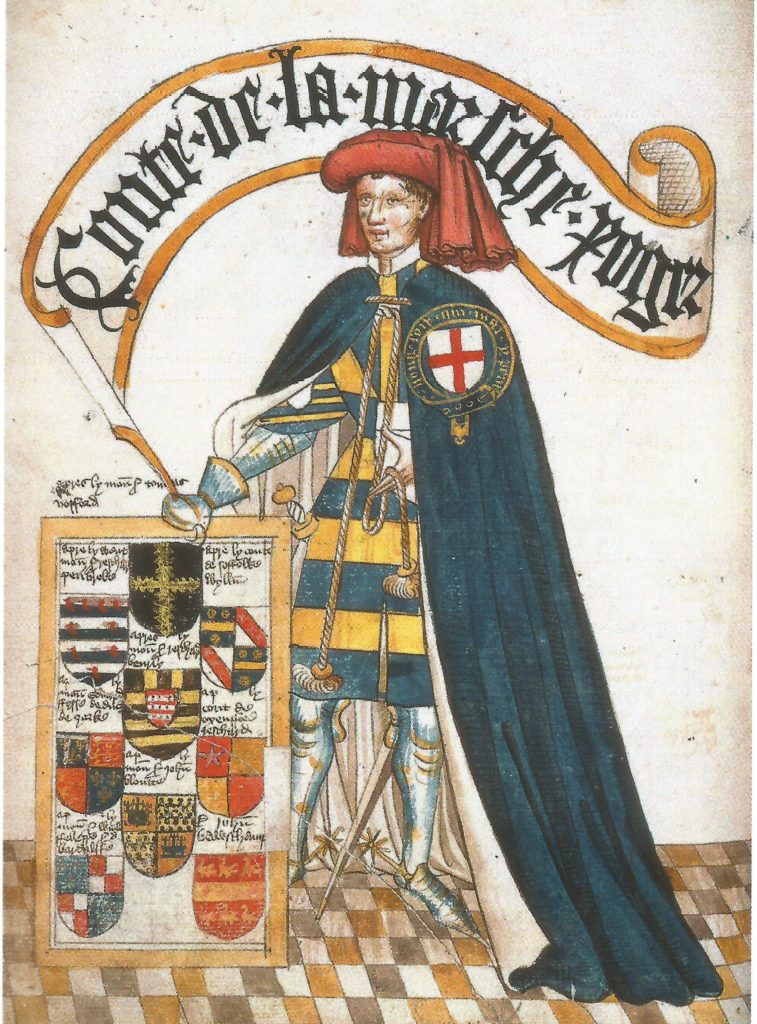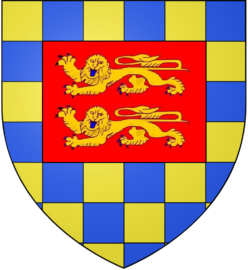With Varenne comes Mortemer. With Mortemer comes Mortimer. With Mortimer comes Mickey Mouse. Here are the surprising explanations !
There are two facts to make the case that Mickey Mouse originated from Normandy. The very name of his creator, Walt Disney, and Mortimer, the original name given to our favorite mouse.
While Walt, which is short for Walter, is the equivalent of the Norman Vautier or Vatier and the French Gautier. Disney is the anglicized form of Isigny, a town in Calvados (Normandy) from where Walt Disney’s ancestors originated. Among those ancestors were Robert and Hugues Suhard d’Isigny who followed William the Conqueror to England. A town in Lincolnshire is named Norton Disney to this day. There, in Saint Peter’s church, one can see the tomb effigy of Sir William Disney dating back to the 13th century. It is only in 1834 that Arundel Elias Disney boarded a ship headed for the United States. The Disney Museum not far from the Golden Gate Bridge in San Francisco does a beautiful job at reminding us of the Norman, English and Irish tale of the Disney family.
The town of Isigny is best known today in France for its caramels, its butter, its cream and its cheeses (camembert, pont l’évêque). The cheese factory of Isigny Sainte-Mère has used the Disney name and the Mickey Mouse character as a marketing tool in various forms on its cheese labels.

« the epic tale from Isigny to Disney ».
Source : Bulletin numéro 214 d’avril 2019
du Club Tyrosémiophile de France (C.T.F.)
Initially, Mickey Mouse was not called that way but Mortimer. Mortimer is the anglicized form of Mortemer(-sur-Eaulne), and not, as Wikipedia and many historians with little knowledge of our region mention, of Mortimer(-en-Lyons) in the Eure department best known for its abbey.
However, in the end, Disney gave the name Mortimer Mouse to another mouse, a bigger one with a long nose. In French, he is known as Mortimer Radeville, Minnie Mouse’s uncle, and sometimes as Ratino, Mickey Mouse’s rival vying for Minnie Mouse’s affections since 1936


De Bellencombre à Mortemer. Les origines brayonnes de Mickey
As for the name Mortemer, it was associated with the highest office of the state in England. One of the descendants of Roger de Mortemer, following the deposition of Edouard II in 1327, became regent. Another became viceroy of Ireland. After the annexation of Normandy to France in 1204, a male progeny branch to perpetuate the surname.
In England, we find the name in several localities : Mortimer and Stratfield Mortimer (in Berkshire), Mortimer West End (in Hampshire), Cleobury Mortimer (in Shropshire). This last must come from the name Raoul de Mortemer (Ranulph Mortimer). A castle is mentioned for the first time in 1154, destroyed by Henri II and rebuilt by Hugh de Mortimer in 1179. Today we can see only the remains of a moat which surrounded it. The principal Mortimer castle was at Wigmore in Shropshire acquired in 1175 and situated not far from the Welsh border. It was similar to that of Whitchurch castle held by William de Warenne. One of their descendants – Roger Mortimer de Chirk, built a castle at Shirk in Shropshire in 1295 on the Welsh border. It was very like that at Presteigne in Powys built by another member of the Mortimer family in 1230.

en habit d’apparat aux armes des Mortimer
Also in the border region with Wales, the castle of Ludlow located only 6 miles to the east of Wigmore became property of Roger Mortimer (1287-1330) through an alliance. He enlarged it and made it his palace. Today there remain majestic ruins including a square keep and a round tower called Mortimer’s Tower. The name Mortimer can also be found in Mortimer Forest, a forest of 247 acres between Ludlow and Wigmore, and in Mortimer’s Cross Water Mill, south of Wigmore. And, at the entrance of the castle of Kenilworth (Warwickshire), Roger Mortimer built at the beginning of the 13th century the tower called Mortimer’s tower today.
All These castles were numerous south and north of the border between Chepstow and Chester. Most of them were motte castles built in the 12th and 13th century of which, today ; there remains very often only the mound. The Mortimers were for several centuries the guardians of the border between Wales and England, hence their title Earls of March. The internet site of the Mortimer History Society has made a list of all those castles and presents them in connection with the Mortimers. In Saint Bartholomew’s church in Much Marcle, a few miles south of Ludlow and Wigmore, one can admire the beautiful tomb in gothic style of Blanche Mortimer, wife of Peter de Grandison who died in 1347. Recently renovated, this master place depicts the crest of the Mortimers 14 times.
(Burelé d’or et d’azur, au chef tiercé en pal, le premier tranché, le troisième taillé de même, le deuxième d’azur en pal d’or, un écusson d’argent brochant en coeur).

In the centre of Ireland, on the eastern bank of the Lough Derravavragh south-west of Castlepollard (Westmeath country) stand the ruins of the Anglo-Norman castle, Mortimer’s Castle. It was held by Roger Mortimer (4th Earl of March, 1374-1398)) and Edmund of Mortimer (5th Earl of March and 7th Earl of Ulster, 1391-1425).

A town also bears the name Mortimer in the United States, south of Chicago. In Michigan, a large metal bridge in the Eiffel style was built in 1934 and is called the Mortimer E. Cooley Bridge.
And who does not know the famous comic trip Blake and Mortimer ? Just like Mickey, the two characters of this comics trip have gone around the world.
Today in Normandy, in Mortemer and Bellencombre, it is hard to imagine the huge impact the Mortimers and the Warrens, two illustrious local families, have had in England and beyond.

From Mortemer to Château-Gaillard. Don’t confuse Mortemer (sur-Eaulne) in Seine-Maritime with Mortemer (en-Lyons) in the Eure department
Le Réveil (10-9-2020)
In Normandy, in Mortemer (sur-Eaulne), there is a place called Les Hattingues (Ex dono Roberti de Hastinguis, 1156-1161). The name is reminiscent of that of Hastings where the famous battle took place in 1066. Is this where the no less famous battle of Mortemer occured in 1054 ? Is the name L’Etoquet, a reminder of the site where the French were « estoqués », in other words, put to the sword ?
For more informations, see The friendships of William de Warenne and the article De Mortemer à Mortimer (Le Réveil, 28-5-2020).
Published in the French magazine :
– De Mortemer à Mortimer (From Mortemer to Mortimer) : Le Pucheux, Fontaine-le-Bourg, n°117, Saint-Clair 2021, pp. 4-9.
– La toponymie normande outre-Manche après 1066. The norman toponymy over Chanel after 1066 (England, Wales, Scotland, Ireland). Revue généalogique du Pays de Bray, Neufchâtel-en-Bray, n°96, automne 2022, pp. 45-57.
